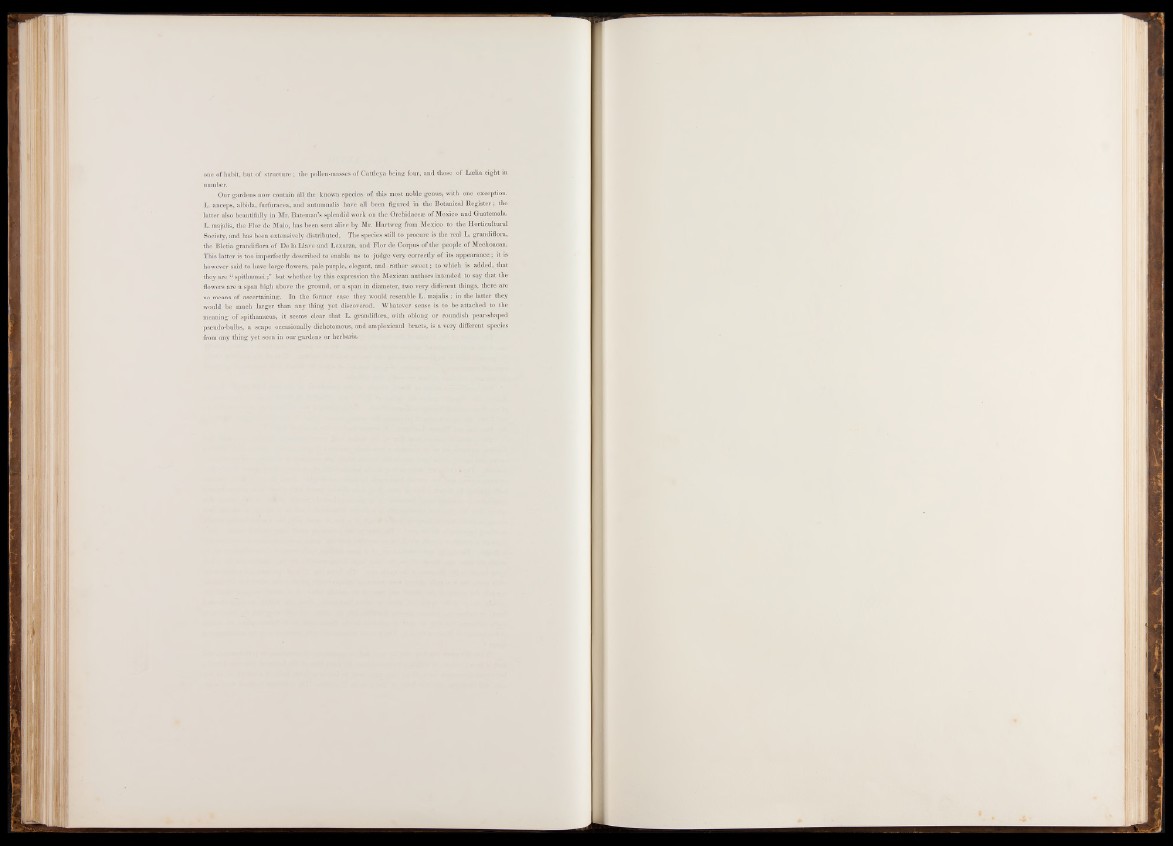
one of habit, but of structure ; the pollen-masses of Cattleya being four, and those of Leelia eight in
number.
Our gardens now contain all the known species of this most noble genus, with one exception.
L. ahceps, albida, furfuracea, and autumnalis have all been figured in the Botanical Register; the
latter also beautifully in Mr. Bateman’s splendid work on the Orchidacese of Mexico and Guatemala.
L. majalis, the Flor de Maio, has been sent alive by Mr. Hartweg from Mexico to the Horticultural
Society, and has been extensively distributed. The species still to procure is the real L. gran diflora,
the Bletia grandiflora of De la Llave and Lexarza, and Flor de Corpus of the people of Mechoacan.
This latter is too imperfectly described to enable us to judge very correctly of its appearance; it is
however said to have large flowers, pale purple, elegant, and .rather sweet; to which is added, that
they are “ spitham eeibut whether by this expression the Mexican authors intended to say that the
flowers are a span high above the ground, or a span in diameter, two very different things, there arc
no means of ascertaining. In thé former case they would resemble L. majalis ; in the latter they
would be much larger than any thing yet discovered. Whatever sense is to be attached to the
meaning of spithamseus, it seems clear that L. grandiflora, with oblong or roundish pear-shaped
pseudo-bulbs, a scape occasionally dichotomous, and amplexicaul bracts, is a very different species
from any thing yet seen in our gardens'or herbaria.